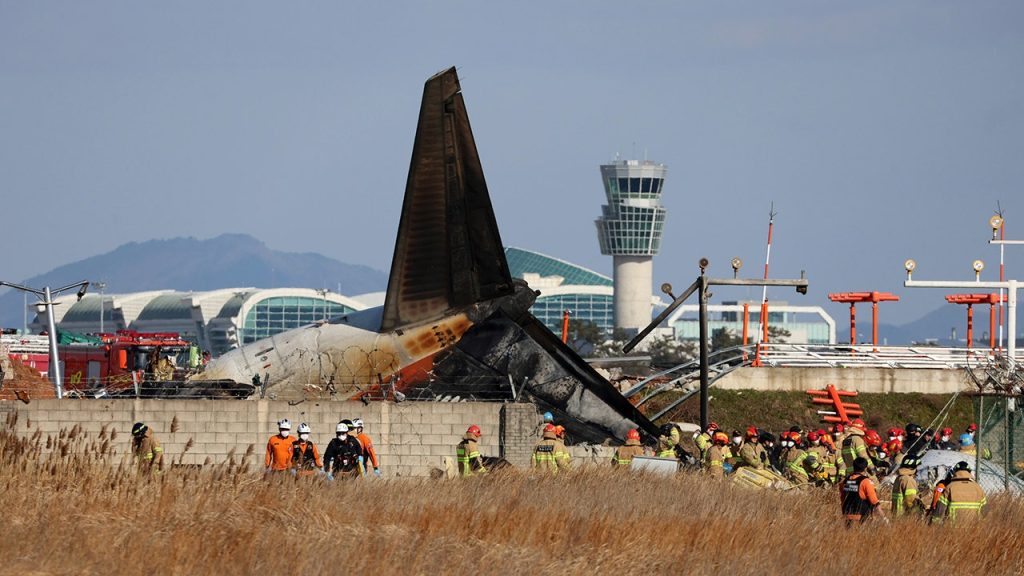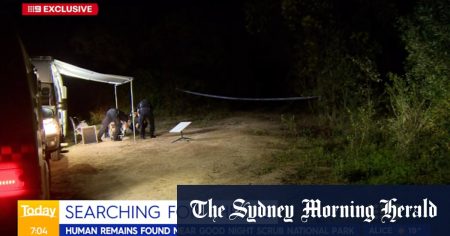Paragraph 1: The Tragic Crash and Initial Observations
On a fateful Sunday morning, a Jeju Air Boeing 737-800 met a catastrophic end at Muan International Airport in South Korea. The aircraft, arriving from Bangkok, skidded off the runway, impacted a concrete barrier, and erupted into flames. Tragically, 179 lives were lost in the inferno, leaving only two surviving crew members. Chilling footage captured the plane’s final moments, showing its uncontrolled slide along the runway, seemingly without its landing gear deployed, before the fatal collision. The immediate aftermath was a scene of devastation, with thick plumes of smoke billowing from the wreckage. Former FAA safety team representative Kyle Bailey, observing the footage, noted the aircraft’s excessive speed during the skid and speculated that the collision with what appeared to be an instrument landing system structure contributed significantly to the disaster.
Paragraph 2: The Investigation Begins
As the smoke cleared and the shock began to subside, the daunting task of piecing together the events leading to the crash commenced. South Korean authorities swiftly recovered the crucial "black box" – the flight data recorder and cockpit voice recorder – which hold vital clues about the plane’s final moments. These devices are now undergoing meticulous examination by government experts. While definitive answers will likely take months to emerge, investigators are exploring various possibilities, including a potential bird strike. The Muan fire station chief, Lee Jeong-hyeon, highlighted the comprehensive nature of the investigation, underscoring the commitment to uncovering the root cause of the tragedy.
Paragraph 3: The Bird Strike Theory and Airport Procedures
A possible contributing factor under investigation is a bird strike. Transport Ministry officials confirmed that the control tower had issued a bird strike warning to the Jeju Air flight shortly before its intended landing. This warning prompted air traffic control to grant the pilot permission to land in a different area of the airport, presumably in an attempt to mitigate the risk posed by the birds. The significance of this warning and the pilot’s subsequent actions will be a critical focus of the investigation, aiming to determine if the bird strike played a direct role in the crash or if other factors, such as pilot error or mechanical failure, were also involved.
Paragraph 4: The Aftermath and Scope of Destruction
The scene at Muan Airport following the crash was one of utter devastation. The aircraft was virtually obliterated, with only the tail assembly remaining recognizable amid the charred wreckage. The intensity of the fire, fueled by the plane’s jet fuel, contributed to the widespread destruction. The loss of 179 lives marks this incident as a major aviation tragedy, prompting a thorough investigation to prevent similar occurrences in the future. The two surviving crew members, while fortunate to escape with their lives, will undoubtedly face physical and emotional trauma from the harrowing experience.
Paragraph 5: Analyzing the Initial Observations and Potential Contributing Factors
Returning to Bailey’s initial observations, the high speed of the aircraft during the skid raises several questions. Was the speed excessive for the landing conditions? Were there issues with the braking system? Did the pilots attempt to execute a go-around (aborting the landing) before the crash? These critical questions will be addressed by investigators as they analyze the flight data and cockpit voice recordings. Furthermore, the apparent lack of deployed landing gear is another significant concern. Were the landing gear not functioning correctly? Did the pilots forget to deploy them? Or did they attempt to deploy them too late? Unraveling these mysteries will be crucial in understanding the chain of events that led to the tragedy.
Paragraph 6: The Long Road to Answers and Preventing Future Tragedies
The investigation into the Jeju Air crash is a complex and painstaking process that will require careful analysis of all available evidence, including the black box data, witness accounts, weather conditions, and maintenance records. The investigation will also examine the airport’s bird control measures and the communication between air traffic control and the pilot. The goal is not simply to determine the immediate cause of the crash, but also to identify any systemic issues that contributed to the accident and to implement changes that will enhance aviation safety and prevent future tragedies. The findings will be closely scrutinized by aviation authorities worldwide, as lessons learned from this tragic event can be applied globally to improve flight safety protocols and prevent similar incidents.










